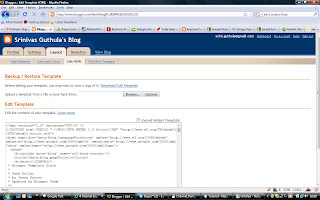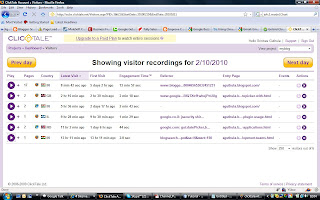I am curious to know how visitors are finding my blog content. I heard lot of good things about this tool, Clicktale, and I implemented for my blog. Just two steps to get started:
1) Create an account with Clicktale and get the tracking code for your domain. I used http://sguthula.blogspot.com as domain. The instructions to get the tracking code are simple and easy to follow.
2) Login to your Blogspot account. Choose "Layout" and "Edit HTML" as shown in the picture below. Copy the tracking code provided by Clicktale.
CAUTION: Take a backup of your html in the "Edit HTML" box to revert back to your previous state of the blog when you do not need the tracking.

Earlier, same technique I used to enable google analytics on this blog. You may find this useful even for integrating google analystics with your Blogspot account. We get similar information from Google analytics and Clicktale, but their presentation is different. Clicktale captures "Mouse Movements" that might be very useful for websites tracking user behaviour and redesign the site for better usability and convertibility (incase of e-commerce applications).

1) Create an account with Clicktale and get the tracking code for your domain. I used http://sguthula.blogspot.com as domain. The instructions to get the tracking code are simple and easy to follow.
2) Login to your Blogspot account. Choose "Layout" and "Edit HTML" as shown in the picture below. Copy the tracking code provided by Clicktale.
CAUTION: Take a backup of your html in the "Edit HTML" box to revert back to your previous state of the blog when you do not need the tracking.

Earlier, same technique I used to enable google analytics on this blog. You may find this useful even for integrating google analystics with your Blogspot account. We get similar information from Google analytics and Clicktale, but their presentation is different. Clicktale captures "Mouse Movements" that might be very useful for websites tracking user behaviour and redesign the site for better usability and convertibility (incase of e-commerce applications).

Comments
Post a Comment